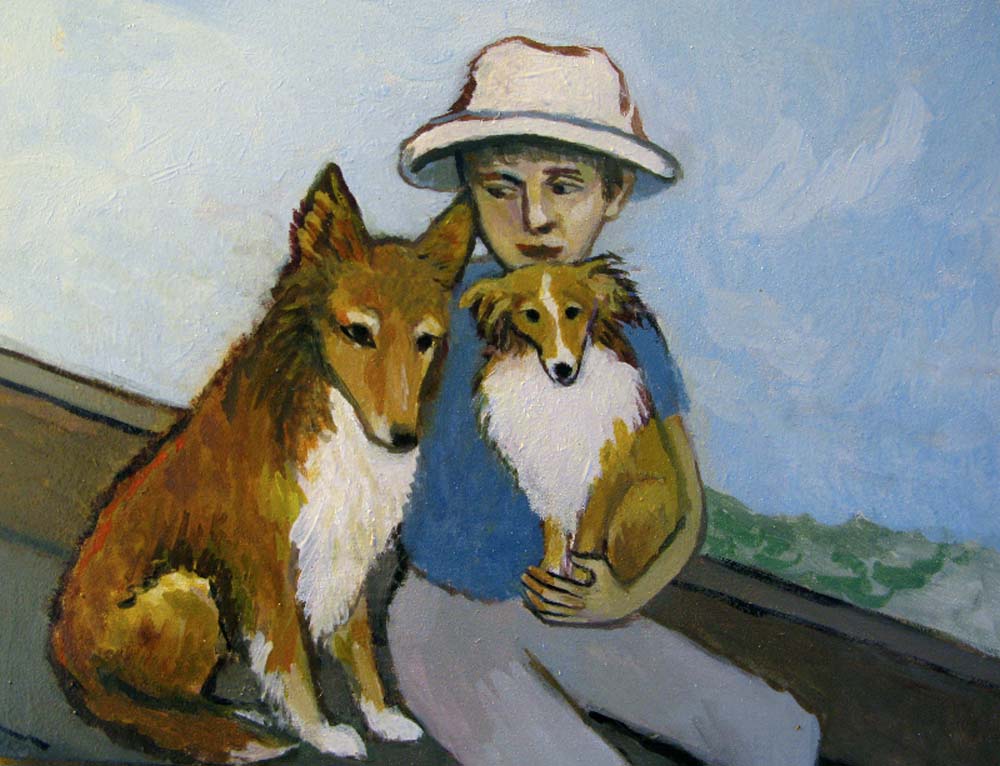 Jane Freeman ’71 is an artist and teaches writing at New York University. For several years, she has painted and exhibited scenes from 19th-century English novels such as Jane Eyre, Persuasion, Silas Marner, Frankenstein, and Wuthering Heights, chapter by chapter. Her new show coincided with Charlotte Bronte’s 200th birthday.
Jane Freeman ’71 is an artist and teaches writing at New York University. For several years, she has painted and exhibited scenes from 19th-century English novels such as Jane Eyre, Persuasion, Silas Marner, Frankenstein, and Wuthering Heights, chapter by chapter. Her new show coincided with Charlotte Bronte’s 200th birthday.
What was your favorite class at Sarah Lawrence?
My three lit classes, with Danny Kaiser, Ilja Wachs, and James Zito.
Did you have a favorite place on campus?
On the rooftop of Garrison, I read The Wings of the Dove three times my freshman year. From the top stairwell of the new dorms, I watched my first snowfall all night (having been raised in Miami). In the morning I dashed outside coatless, and pitched into a chilly downhill slide. Other favorite places: my attic room at Andrews, and nearly every inch of Bates, especially the post office, where I mailed letters home daily; the art studios, where I learned printmaking from Mr. Uchima; and the dining room, where I acquired my lifelong enthusiasm for coffee.
When did you first connect your passion for reading and writing to your painting?
In second grade, our teacher read to us every day after lunch, books like The Call of the Wild. Most kids dozed off, but I drew. The impulse to pictorialize books continues. “The Painted Novel,” 147 captioned paintings depicting every chapter of Jane Eyre and Frankenstein, just opened at the Municipal Building, in lower Manhattan. The reception on April 21 will honor Charlotte Bronte’s 200th birthday. My intention is for viewers to “read” a novel by perambulating the room. I’ve also painted Persuasion, Silas Marner, and Wuthering Heights, which are posted at www.janefreemanart.com, and at www.bookdoors.com. If you’d like to come to the reception on April 21 (6-8 p.m.), please RSVP by calling 212.669.4448. The Municipal Building is at Chambers and Centre Streets. The show is on the 19th floor. To receive an announcement, please e-mail me.
What’s your process when translating a novel from the page into art?
Painting feels something like acting. In automatically pretending I’m the characters as I paint, I become them, all of them. (I especially relished turning into the Frankenstein creature.) A friend recently reminded me that the experience of reading is an inner act of imaginative co-creating. Going further by transposing absorption in narrative into a different genre, one does become even more of a collaborator with the author.
Do you have a favorite book?
Well, I’d have to say Jane Eyre. But I am now enthralled by the intoxicating prose of W. G. Sebald (the veracity of his fiction enhanced by an abundance of characteristically enigmatic photos), and by the peculiar yet oddly familiar writings of Robert Walser.